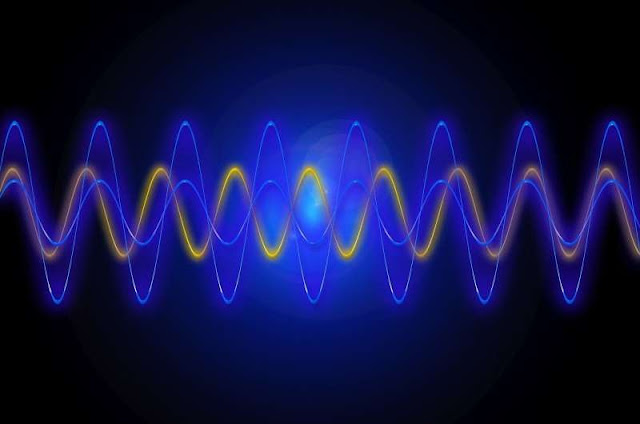Heat scatters better in most materials. A hotspot will eventually disappear if left alone as it warms the area around it. However, in certain unusual states of matter, heat can act like a wave, oscillating like a sound wave bouncing off walls. As a matter of fact, physicists refer to this wave-like heat as “second sound.” Only a few materials have been found to exhibit second sound signatures. For the first time, MIT physicists have now directly photographed second sound.
Physicists capture first sounds of heat ‘sloshing’ in a superfluid, revealing how heat can move like a wave

The new photos show how heat may “slosh” back and forth like a wave, even if the physical mass of a material may move in completely opposite ways. The pictures depict the unadulterated flow of heat, unaffected by the constituents of a substance. Assistant Professor Richard Fletcher compares it to what would happen if you had a tank of water and heated one side to almost boiling point. “If you then watched, the water itself might look totally calm, but suddenly the other side is hot, and then the other side is hot, and the heat goes back and forth, while the water looks totally still.”
The group, led by Thomas A. Frank Professor of Physics Martin Zwierlein, was able to visualize the second sound in a superfluid, a unique state of matter that results from cooling a cloud of atoms to such low temperatures that the atoms start to flow like a fluid with no friction at all. Theorists have predicted that heat should likewise flow like a wave in this superfluid state, but scientists have not been able to physically witness the phenomenon until recently. The latest findings, which are published in the journal Science, will provide physicists with a more comprehensive understanding of the flow of heat through superfluids and related materials, such as neutron stars and superconductors.
“There are strong connections between our puff of gas, which is a million times thinner than air, and the behavior of electrons in high-temperature superconductors, and even neutrons in ultradense neutron stars,” Zwierlein explains. “Now we can probe pristinely the temperature response of our system, which teaches us about things that are very difficult to understand or even reach.” First author Zhenjie Yan, former physics graduate students Parth Patel and Biswaroop Mukherjee, and Chris Vale from Swinburne University of Technology in Melbourne, Australia are co-authors of the paper alongside Zwierlein and Fletcher. Members of the MIT-Harvard Center for Ultracold Atoms (CUA) include the researchers from MIT.
Atomic clouds can change into uncommon states of matter when they are cooled to temperatures very near absolute zero. Zwierlein’s group at MIT studies the strange events that arise between ultracold atoms, in particular between fermions, which are particles like electrons that ordinarily stay apart. However, fermions can be coaxed to couple up and interact robustly under specific circumstances. Fermion flux in this coupled state can take non-standard forms. The group uses trapped fermionic lithium-6 atoms that are chilled to nanokelvin temperatures for their most recent studies.
The two-fluid concept of superfluidity was first put forth by physicist László Tisza in 1938. According to this idea, a superfluid is really a mixture of a normal, viscous fluid and a superfluid that is frictionless. Two kinds of sound should be possible with this mixture of two fluids: regular density waves and unusual temperature waves, or “second sound,” as physicist Lev Landau subsequently dubbed it.The MIT team reasoned that since a fluid changes into a superfluid at a specific critical, ultracold temperature, the two forms of fluids should likewise transfer heat in distinct ways: Heat should disperse normally in conventional fluids, but it may flow like a wave in superfluids, just like sound does.
“Second sound is the hallmark of superfluidity, but in ultracold gases so far you could only see it in this faint reflection of the density ripples that go along with it,” Zwierlein explains. “The character of the heat wave could not be proven before.”Zwierlein et al. aimed to separate and track the wave-like thermal motion that is the second sound from the actual motion of fermions in their superfluid. They achieved this by creating a brand-new thermography technique called heat mapping. To image heat sources in typical materials, one would employ infrared sensors.
On the other hand, gasses do not emit infrared radiation at extremely low temperatures. Rather, the group devised a way to “see” heat transfer via superfluid using radio frequency. They discovered that, depending on their temperature, the lithium-6 fermions resonate at various radio frequencies: The cloud echoes at a greater frequency when it is warmer and contains more normal liquid. Colder regions of the cloud resonate at a lower frequency.Any regular, “hot” fermions in the liquid began to ring when the researchers applied the higher resonant radio frequency. Then, by focusing in on the resonating fermions and tracking them over time, the researchers were able to produce “movies” that demonstrated the pure motion of heat, which is a sloshing back and forth like sound waves.
“For the first time, we can take pictures of this substance as we cool it through the critical temperature of superfluidity, and directly see how it transitions from being a normal fluid, where heat equilibrates boringly, to a superfluid where heat sloshes back and forth,” Zwierlein explains.Through these tests, scientists have successfully imaged the pure motion of heat in a superfluid quantum gas as well as a second sound for the first time.
The scientists want to carry out more studies to map the behavior of heat in other ultracold gases with greater precision. Then, they claim that their research may be expanded to predict heat flow in other materials with strong interactions, like neutron stars and high-temperature superconductors.”Now we will be able to measure precisely the thermal conductivity in these systems, and hope to understand and design better systems,” Zwierlein says.


